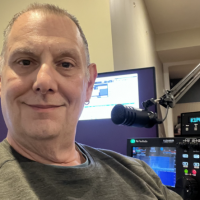SmartSDR v3.7.4 and the SmartSDR v3.7.4 Release Notes | SmartSDR v2.12.1 and the SmartSDR v2.12.1 Release Notes
SmartSDR v1.12.1 and the SmartSDR v1.12.1 Release Notes
Power Genius XL Utility v3.8.8 and the Power Genius XL Release Notes v3.8.8
Tuner Genius XL Utility v1.2.11 and the Tuner Genius XL Release Notes v1.2.11
Antenna Genius Utility v4.1.8
Need technical support from FlexRadio? It's as simple as Creating a HelpDesk ticket.
DIGU Reports Different Frequency Than USB via CAT... Why?

I just know that I'm missing something.
Tried working the RTTY RU for a while this weekend. After, oh, three or four hours of S&P, I realized that the frequencies in my log were all wrong.
When in DIGU, the frequency that's reported via CAT appears to be 2210hz lower than it actually is.
So, for example, if I set the radio frequency to 14.090.000... if I'm in USB mode, that frequency corresponds (correctly) to the left edge of the waterfall in my digimode program. I can then wander the 5Khz shown in the waterfall and work stations at will. The frequencies in my log are correct.
But if I switch the radio to DIGU and set the radio frequency to the same frequency, the frequency reported by CAT is wrong, and the left edge of my digimode program's waterfall shows the wrong frequency... it's low by 2210hz!
Now, I can fix this by applying a -2210 "frequency correction" for DIGU in my digimode program... but that seems rather silly.
Like I said, I'm SURE I'm missing something, because this is really odd. Can somebody please tell me what's going on?
Answers
-
Why Digu?0
-
I think this is a difference between reporting the carrier frequency and the mark / space AFSK tones a few Kc up band. 2210 - 170/2 = 2125 which is the mark tone I believe. 170 is the shift.
This offset is observed in FlDigi also, although the delta is 1570 which puts the RTTY stations dead center in the filter passbands. One reads the freq reported by FlDigi and it's dead on wrt the RTTY tones.
Why DIGU -> Filters and modes are setup for RTTY etc in this mode setting. For example, the speech processor is automatically turned off, etc etc.....
Was working this contest also with a 6500. Learning the ropes and bagging ZLs / JA's / VK's etc.
Take above with grain of salt as I am new to this particular radio.
k3Tim
0 -
Thanks Tim. My head hurts. I've never understood this practice of reporting offset frequencies for digimodes. The frequency the dial us set to is just that... Not some other frequency with an offset. If I want to spot a station, I can do so from within my digimode program which knows the AF offset at which I'm working within the waterfall . I still don't understand the reported offset when I use DIGU, so would appreciate a description of what I'm seeing and why.1
-
If there was only one standard set of AFSK tones, you would be quite right that offsets would be unnecessary. Modern usage, however, has operators setting dial frequencies to an agreed on watering hole, and then spotting/directing to the AFSK center (between high and low tone), unless there's a sync tone (like in JT modes), in which that is used. CAT has no way of knowing what modulating tones you're using, so defaults to dial frequency, essentially where the carrier would be if you were on AM. As to the difference in USB VS DIGIU, I haven't observed that at all. Could your digimode software be creating an offset and applying it somehow? Which one are you using? I notice with FLDigi, for example, the internal log gives the tone center when I import it into my main logger (MacLoggerDX). If I logged directly in MLDX, entries would have the dial frequency only, which would be somewhat inaccurate. Just a thought, but your digimode program could be reading the CAT mode setting and trying to "fix" it to act like an FSK signal. There ought to be a mapping menu in there somewhere. Neither way is "wrong" but it sure is easier spotting using the AFSK center over dial. Hope this helped!0
-
VERY helpful reply, George. Thank you so much.
I guess I always just assumed everyone spotted the center frequency of each digital mode signal. I run with my waterfall (in MixW) usually 5K wide, so I take it for granted that I can work any of a zillion PSK signals that are in that wide swatch of space. If I log or spot from within MixW, MixW logs or spots the center of the signal... whether that's a little PSK31 signal or a big Olivia 1000/16 signal, and regardless of where I work in the waterfall... the center of the signal is the frequency logged. The dial frequency is left left edge of my waterfall.
Well, the dial frequency IS the left edge of my waterfall in USB. Not so much in DIGU.
Interesting that you haven't noticed a difference between USB and DIGU in your working with MacLoggerDX.
Absent getting an authoritative answer from Flex here, your helpful reply is sending me back to the radio and computer, trying to get a better handle on exactly what I'm seeing. You're absolutely right: It could be MixW doing something weird.
I'm going to send a few test CAT commands... look at the CAT source code... and see if I can better or more accurately characterize what I'm seeing.
Again, thanks very much for helping to clear my thoughts and send me in the right direction.
Peter
K1PGV0 -
Peter,
Let me see if I can help; because, I too had some trouble, at first with the DIGx modes.
As I understand it, if you are in USB or LSB, your dial indicates the 0Hz portion of the audio (The band pass filter (BPF) usually defaults to 100Hz to 2700Hz in USB and LSB). We listen to the USB/LSB signal in that audio range and adjust our bandwidth as needed, by taking off the high frequencies first, using the 'button' and then the low frequencies by dragging the low side of the blue vertical bar. This all seems normal.
However, when you are running in digital modes, your tones are rarely ever near the 0Hz edge. Usually they are around 800, 1000 or 1500Hz, all depending on your hardware and what YOU don't mind listening to (I always listen to my Rx audio, even on digital and my wife thinks I'm crazy. Well, that's a different discussion [hihi]). As a result it isn't as important what the actual frequency is; but, the BPF needs to keep it centered; therefore shift around an audible frequency.
Did you notice that both of the above methods do the same thing? Adjust the BPF above and below the center frequency. In USB/LSB it's just done manually; whereas, in DIGU/DIGL it is automatic and seems fixed around 1500Hz (Can you change from the center being at 1500Hz? I don't know how, if you can, with the 6000 series; but, I know how with my Yaesu FT897D)
While the above makes sense to me, I do find it strange that the CW configuration centers the dial on the carrier, unlike the digital modes; but, it DOES have a way of adjusting the 'side tone' to our preferred audio frequency.
As a result of all of this, two HF digital mode operators rarely report the same frequency. If I'm listening on SSB to a 1000Hz centered PSK31 signal I will report a frequency 500Hz different than the operator who uses 1500Hz as his/her center frequency.
RTTY, is one of the only modes we use today that still has well defined frequencies, primarily because it has used two very narrow analog audio filters, since before SSB was invented.
RTTY uses 2125Hz for MARK and SPACE is (170Hz higher in SSB and used 450Hz higher on other modulation schemes).
(BTW - For those who wonder why you want to use DIGx modes - DIGU and DIGL both disable audio processing).
Sheesh! that was verbose; especially, for me.
I hope this helped, a little.
73's de Mike WA6FXT1 -
Thanks Mike. That's very helpful.
It amazes me how different people operate the digital modes. Much of this difference, I think, come from when and how they started.
I only became a ham 9 years ago, and I *started* working digital modes with an SDR-1000 and MixW. I opened the receive filters up on the SDR-1000 to 5K wide, and set MixW up to show the entire spectrum on the waterfall. Under most conditions, I would simply "walk up" the waterfall display working stations (RTTY, PSK, whatever) at whatever random offset at which they appeared in the 5K display. So, as I move up the display, the stations each "sound" different Which is cool, because you can watch what's going on in a large swatch of the digimode area but very quickly tell when your station transmits (I *always* listen to digital modes as well!).
It never occurred to me to try to re-tune and always transmit at a single AF offset in the waterfall. If I needed better filters, because of adjacent QRM or whatever, I'd just manually "pull" the filter edges around my signal of choice, like I assume most people do on SSB or CW. When I logged or spotted a station, MixW automagically logged/spotted the center of the digimode signal... which struck me as being correct. The dial frequency simply set the left edge of my waterfall, and MixW added the AF offset.
I did it this way because it never occurred to me to operate any other way. What did I know? I was the only ham I knew who operated digital modes!
I now, all these years later and as a result of this thread here, see that this is in fact not a common way to operate. And NOW, thanks to your reply and George KF2T's reply, I see how other folks do it.
In terms of what frequency difference is reported by CAT... As I said previously, I've got to go and explore this further so I can ask a more clear and precise question.
Thanks again for your helpful explanation...0
Leave a Comment
Categories
- All Categories
- 245 Community Topics
- 2.1K New Ideas
- 490 The Flea Market
- 7.4K Software
- 5.9K SmartSDR for Windows
- 135 SmartSDR for Maestro and M models
- 327 SmartSDR for Mac
- 243 SmartSDR for iOS
- 224 SmartSDR CAT
- 163 DAX
- 347 SmartSDR API
- 8.5K Radios and Accessories
- 6.9K FLEX-6000 Signature Series
- 766 Maestro
- 42 FlexControl
- 836 FLEX Series (Legacy) Radios
- 727 Genius Products
- 392 Power Genius XL Amplifier
- 251 Tuner Genius XL
- 84 Antenna Genius
- 222 Shack Infrastructure
- 149 Networking
- 370 Remote Operation (SmartLink)
- 118 Contesting
- 582 Peripherals & Station Integration
- 116 Amateur Radio Interests
- 810 Third-Party Software

